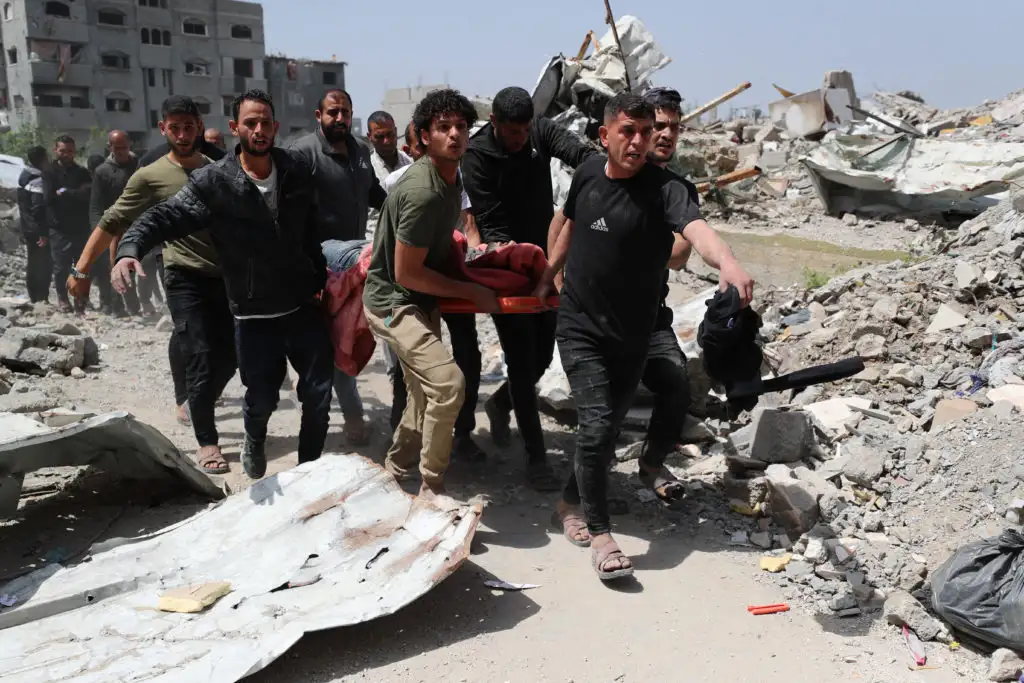Gaza Airstrikes Leave 15 Dead, Including Women and Children
At least 15 people were killed in a series of Israeli airstrikes across the Gaza Strip on Sunday, according to officials from Gaza’s Health Ministry. The dead included multiple women and children, adding to the growing civilian toll amid the ongoing hostilities.

Heavy Strikes in Densely Populated Areas
Several air raids struck residential neighborhoods, causing widespread devastation. One of the deadliest incidents occurred in a refugee camp, where six members of the same family were killed when a missile struck their home overnight. Elsewhere, a father and his young child died in a separate blast in a Gaza City district.

Local hospitals, already operating under extreme pressure, reported receiving bodies and injured victims from at least four different locations. Witnesses described scenes of chaos and heartbreak—dust clouds rising from collapsed buildings, screams echoing through the streets, and desperate efforts by neighbors to rescue survivors trapped beneath debris.
Innocent Lives Lost
Most of those killed were not involved in the fighting. According to medical workers, the majority of the casualties were civilians caught unaware. One grieving woman outside a hospital in Khan Younis said her daughter had been playing with her siblings when their building was hit. “She was only seven,” she whispered, holding her daughter’s school bag.
In many homes, entire families are in mourning. The stories emerging from the rubble reflect the same devastating pattern: civilians—particularly women and children—bearing the brunt of a conflict they have no part in.
Israeli Military Response
The Israeli military stated the strikes were aimed at Hamas positions and militant infrastructure, calling them retaliatory after rocket attacks were launched from Gaza into Israeli territory earlier this week. A spokesperson for the Israel Defense Forces (IDF) said they targeted what they described as “legitimate military threats.”
However, the frequency with which civilian areas have been hit has drawn criticism. Many question how precise these operations really are, especially when families are being buried beneath their homes. The military did not confirm whether any militants were killed in the latest round of strikes.
A Worsening Humanitarian Situation
The situation in Gaza was already dire, and the recent escalation has only made life harder for its residents. Power outages are frequent, medical supplies are dwindling, and access to clean water is increasingly limited. The territory, home to over two million people, has been under an Israeli blockade for nearly two decades, further isolating it from outside support.
Hospitals are stretched beyond capacity. Emergency rooms are crowded, and the limited staff is working around the clock. “We don’t have the resources to cope with this level of trauma,” said a doctor at Al-Shifa Hospital. “Every hour, more injured arrive—and many of them are children.”
Global Condemnation and Calls for Restraint
The international community reacted with alarm. The United Nations and several human rights organizations condemned the civilian deaths and called for restraint on all sides. In a statement, the UN Secretary-General urged both Israel and Hamas to avoid further escalation and prioritize the protection of civilians, especially children.
Human rights groups have also called for an independent investigation into the strikes, questioning whether international laws of warfare are being followed. “Targeting residential areas, even if unintentionally, shows a dangerous disregard for human life,” said a spokesperson for Amnesty International.
Civilians Paying the Price
The people of Gaza are no strangers to conflict, but each new round of violence leaves deeper scars. Many families live in constant fear, never knowing when or where the next strike might hit. Schools have closed, markets are deserted, and families are sleeping in shifts to keep watch through the night.
“For how long must we live like this?” asked one shopkeeper whose storefront was destroyed in the bombing. “We want to live, to work, to raise our children. But there is no safety, not even in our homes.”
A Future Clouded by Conflict
There seems to be no immediate end in sight. Without a lasting ceasefire or meaningful dialogue between both parties, the violence threatens to spiral even further. Meanwhile, ordinary people—mothers, fathers, and children—continue to pay the heaviest price.
As Gaza counts its dead, many wonder how many more lives must be lost before the world intervenes in a meaningful way. Until then, the cycle of grief continues, and peace remains a distant hope for millions trapped in one of the most volatile regions on Earth.






